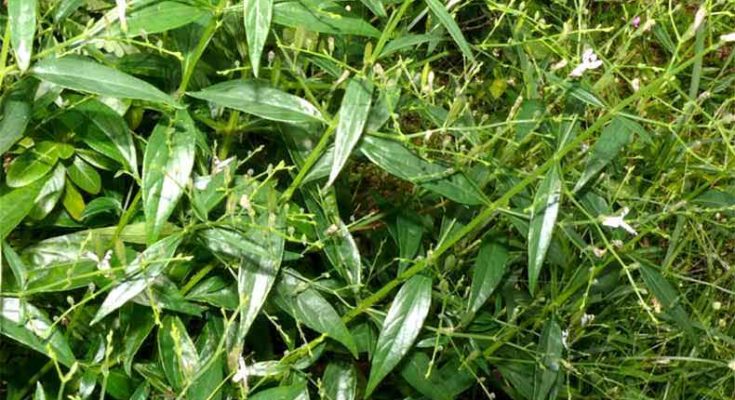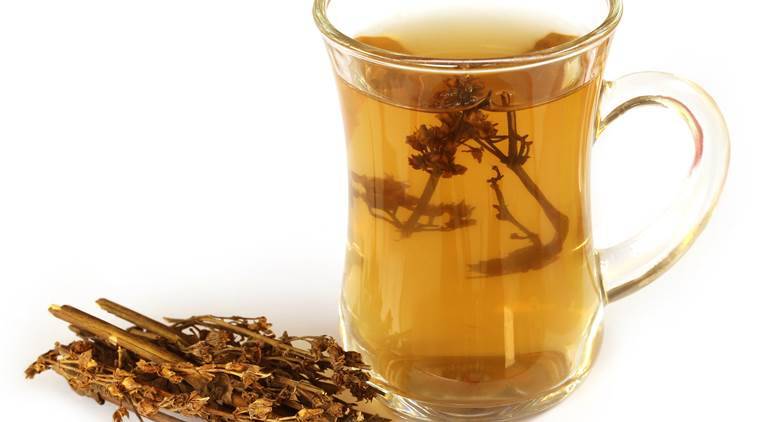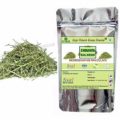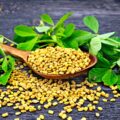Diabetes is a chronic disease that occurs either when the pancreas does not produce enough insulin or when the body cannot effectively use the insulin it produces. Insulin is a hormone that regulates blood sugar. Hyperglycemia, or raised blood sugar, is a common effect of uncontrolled diabetes and over time leads to serious damage to many of the body’s systems, especially the nerves and blood vessels.
In 2014, 8.5% of adults aged 18 years and older had diabetes. In 2016, diabetes was the direct cause of 1.6 million deaths and in 2012, high blood glucose was the cause of another 2.2 million deaths. Between 2000 and 2016, there was a 5% increase in premature mortality from diabetes. In high-income countries, the premature mortality rate due to diabetes decreased from 2000 to 2010 but then increased in 2010-2016. In lower-middle-income countries, the premature mortality rate due to diabetes increased across both periods.
Over the years, there has been a rise in the use of herbal medicine in the management of diabetes. Many herbs have been used in traditional medicine for millennia, for example studies suggest that both Asian and American ginseng may help lower blood sugar in people with diabetes. Extract from the ginseng berry was able to normalize blood sugar and improve insulin sensitivity in mice who were bred to develop diabetes in one study.
What is Chirata?
Chirata (Swertia chirata) is a herb belonging to the family Gentianaceae, a large genus of herbs distributed in the mountainous regions of tropical area at an altitude of 1200-3600 m. The herbal drug “chiretta” obtained from the dried plants of swertia species. The whole plants of Swertia are medicinal but roots are the most powerful parts. People use the parts that grow above the ground to make medicine. Chirata is used for fever, constipation, upset stomach, loss of appetite, intestinal worms, skin diseases, and cancer. Some people use it as “a bitter tonic.” In India, it has been used for malaria, when combined with the seeds of divi-divi (Guilandina bonducella). The roots are useful as a tonic without aroma or astringency.
In Indian medical system, chiretta is used as remedy for bronchial asthma, liver disorders, chronic fever, anemia, stomachic and diarrhoea. Chiretta is also used in dying cotton cloth and in liquor industry as bitter ingredients. In Ayurveda, S. chirayita is used as antipyretic, anthelminitic, antiperiodic, laxative and in asthma and leucorrhoea. In Yunani system the plant is used as astringent, tonic, stomachic, lessens inflammation, sedative to pregnant uterus and chronic fevers.
Chirata is also used in British and American pharmacopoeias as tincture and infusions. Studies indicate that the genus Swertia exhibit variety of biological activity such as hepatoprotective, antihepatotoxic, antimicrobial, anti-inflammatory, anticarcinogenic, antileprosy, hypoglycemic, antimalarial, antioxidant, anticholinergic, CNS depressant and mutagenicity. The pharmacological properties of Swertia have raised great interest.
How To Use Chirata In Diabetes
The main chemical ingredients in Chirata are Swertiamarin, Amarogentin, Swechirin, Mangiferin, Sweroside, Gentianine, Amaroswerin, Oleanolic acid, Swertanoone, Ursolic acid. Phytochemical analysis divulges alkaloids, flavonoids, steroids, glycosides, triterpenoids, saponins, xanthones and ascorbic acid. Cell culture studies suggests that Chirata have a blood glucose lowering activity due to the stimulation of insulin release from the pancreas. Another study reported that in rats bed with Chirata there was significant blood sugar lowering effect. Swertia chirata fed orally caused enhancement of the blood sugar lowering effect of tolbutamide in healthy albino rats.
However, Chirata can drastically lower blood sugar levels in some people. Watch for signs of low blood sugar (hypoglycemia) and monitor your blood sugar carefully if you have diabetes and use chirata as a medicine.
Dosage of Chirata in Diabetes
The appropriate dose of chirata for use as treatment depends on several factors such as the user’s age, health, and several other conditions. At this time there is not enough scientific information to determine an appropriate range of doses for chirata. Keep in mind that natural products are not always necessarily safe and dosages can be important. Be sure to follow relevant directions on product labels and consult your pharmacist or physician or other healthcare professional before using.
Chirata is likely safe when taken by mouth in the amounts found in beverages. However, there isn’t enough information available to know if chirata is safe in larger medicinal amounts.
Here is how to use Chirata;
Chirata Powder – 1-3 gm twice a day or as directed by the doctor.
Chirata Tablet – 1 tablet twice a day or as directed by the doctor.
Chirata Capsule – 1 capsule a day or as directed by a physician.
How To Use Chirata
Chirata powder
- Take 1-3 gm (or as directed by a physician) of Chirata powder.
- Swallow it with lukewarm water once or twice a day.
- Consume it daily to manage worm infestations.
Chirata Decoction
- Take raw or dried Chirata (whole plant).
- Boil it in 1 cup of water till it is reduced to 1/4th of its original quantity.
- Filter this water and drink 3-4 teaspoons of it twice a day.
- Consume it daily to get relief from constipation.
Chirata Tablets
- Take 1 tablet a day or as directed by the doctor.
- Swallow it with water 1-2 times a day.
Chirata Capsules
- Take 1 capsule a day or as directed by the doctor.
- Swallow it with water 1-2 times a day.
- Consume it daily for blood purification.
Special Precautions & Warnings:
Pregnancy and breast-feeding: There is not enough reliable information about the safety of taking chirata if you are pregnant or breast-feeding. Stay on the safe side and avoid use.
Intestinal (duodenal) ulcers: Chirata can make ulcers in the intestine worse.
Surgery. Chirata might lower blood sugar. In theory, chirata might interfere with blood sugar control during and after surgical procedures. Stop using chirata as a medicine at least two weeks before a scheduled surgery.
Are there any interactions with medications?
Medications for diabetes (Antidiabetes drugs) Interaction Rating: Moderate. Be cautious with this combination. Talk with your health provider. Chirata might lower blood sugar in some people. Diabetes medications are also used to lower blood sugar. Taking chirata as a medicine along with diabetes medications might cause your blood sugar to go too low. Monitor your blood sugar closely. The dose of your diabetes medication might need to be changed.
Some medications used for diabetes include glimepiride (Amaryl), glyburide (DiaBeta, Glynase PresTab, Micronase), insulin, pioglitazone (Actos), rosiglitazone (Avandia), chlorpropamide (Diabinese), glipizide (Glucotrol), tolbutamide (Orinase), and others.







